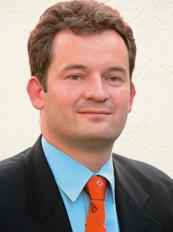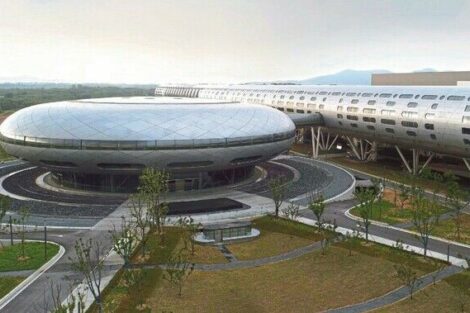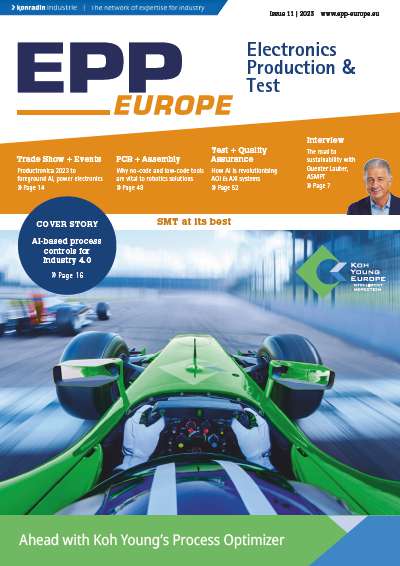Depending on whom you ask, OLEDs (displays made from organic materials) are either a popular hype – too early to tell how far they could go as a superior replacement of the ubiquitous LCDs – or they are taking off already as the target of massive investment in labs and fabs. Opposing as they are, both views are true. In Europe, such programs as ADRIA and EPIC are road-mapping the way. But can they really work around the huge gap between Asian innovative power and the weak backwoods habits of European players in the case of panel technology?
Take the latest news from Taiwan. In the first quarter of 2005, RiTdisplay has shipped 2.4m OLED displays. In the second quarter, this figure increased to 4m. In all of 2005, the supplier expects to ship a total of 20m panels – all of them passive-matrix, of course, and most of them going into mobile electronics devices, as the major taker of small displays. So unit-wise, the company is emerging as the world leader before Korean Samsung. In terms of revenue, Samsung, though, still is king: with sales of $28.1m in Q1, according to market researcher Displaysearch, well ahead of RiTdisplay with $19.2m. Next up are Pioneer ($17.4m), Univision ($13.4m) and, finally a European contender, Philips with $5.0m. Those five together hold 80% of the world’s OLED supplies. Total sales volume in Q1, Displaysearch states, has topped the $100.00m mark for the first time.
On the other hand, almost all of those OLEDs panels were of the passive-matrix type, and mainly small-molecule based. The future should however look different: active matrix (AMOLED), large molecule, flexible substrates and organic-materials role-to-role processing, and no cleanroom necessary. This bright outlook is still a long way off, at least until 2006/2007 when the dominant Far-Eastern manufacturers will begin investing in the brand-new AMOLED technology. Besides some physical properties, foremost being the differential lifetime of the primary colors, with blue being the weakest, there are the challenges of tact time. In OLEDs it remains at 2 to 3 minutes compared to LCDs with just 30 seconds.
Where is Europe in all this technology?
That’s a major constraint in costs and in terms of volume output. Yields meanwhile are up to 90%. But the highest priority in OLED manufacturing still is backplane uniformity, with a-Si, poly-Si and OTFT (organic TFT) slugging it out for dominance. Nevertheless, market researcher Displaysearch sees more than 20 companies vying for AMOLED success as soon as 2007. If all issues are resolved by then, there could be a market of $5bn just around the corner.
Where is Europe in all of this? At present more or less in the R&D lab and in strategic scheming for funding and roadmap setup. As far as manufacturing equipment goes, the Japanese suppliers are well positioned here, as a report from market researcher iSupply indicates (OLED Equipment Special Report). The Japanese draw on their long-time first-mover advantage in LCDs to extend it into OLED manufacturing, only two European-based companies can be found among the leading suppliers.
One major distinction of the OLED display industry against the widely cross-licensed semiconductor industry is the tight intellectual property regime. The NDA (non-disclosure agreement) rules are to the detriment of fast development of the industry as a whole. Lack of standardization is one of the most glaring results.
Roadmapping for advanced displays
Time for Europe and its institutional strengths to gear up and jump in to catch the OLED bird after LCD is gone for good, says Eric Maiser of German equipment supplier association VDMA, who coordinates the new European display networking initiative ADRIA (advanced display research integration action). “In OLEDs, Europe still leads in second-generation manufacturing equipment. At least with the OLED stack, as one of three critical process steps in manufacturing besides the other two: backplanes and encapsulation. The weak point of Europe”, Maiser cautions, “is in backplanes. There we have an open flank”. Without reliable Asian partners, nothing will move. On the other hand, manufacturing equipment in general, machine tools, automotive supply, aerospace and chemicals are the traditional strengths of Europe’s various industrial areas to capitalize on in the case of OLEDs and there specific manufacturing process building on traditional machining and forming capabilities.
So, ADRIA funded by the 6th Framework Program of the European Union to the tune of €2m over 2 years is a beginning (see EPP Europe 1/2, 2005, page 19). It bundles six associations: the German Flat Panel Display Forum (DFF), Semi, the Scottish Optoelectronics Association (SOA), the French Club ViSU, the Swedish LCD Center and the University of Dundee in the UK. At the end of its two-year run, the initiative should mutate into a European advanced display association along the lines of the American USDC to fund R&D projects. To that purpose, the program contains five application fields for advanced displays such as automotive, aerospace, household, etc. And its members will met to devise a ten-year roadmap for the definition, specification and technology of standardized displays in these fields, all along the methodological construct of the semiconductor roadmap ITRS.
The difference to the ITRS, Eric Maiser says, is that ADRIA goes beyond the current issues of the active-matrix backplane – to be open to real disruptive new technologies. Where ITRS works on downscaling Si-CMOS, the initiative gears up for large-area devices, dry processing of large substrates, role-to-role processing of organic materials and on microsystems technology and mechatronics. ADRIA doesn’t do research of its own. It is rather the coordinating body clustering six other research projects funded within the program: FlexiDis works on flexible active-matrix displays based on OLEDs and electrophoresis; PolyApply explores scalable and ubiquitous communications technologies; OLLA gears for OLEDs as light sources to replace incandescent and fluorescent lamps; NaPa develops nano-patterning techniques; SHIFT is about smart, high-integration, mechanically flexible electronic systems, and FlexLED for flexible consumer displays based on polymer-LEDs. These six research projects are funded 50/50 like traditional government/industry partnerships at €20m each. Organic electronics obviously is one of the focal points of the cluster. All in all, the EU has spent €65m over the last four years on advanced displays in this initiative.
Strategy of European research initiatives
What’s next for ADRIA? A tighter coordination with the Paris-based EPIC (European Photonics Industry Consortium) and its 55 member companies, which dedicates much of its resources to OLED lighting. To that purpose, both initiatives are strategizing for the next round of funding in the follow-up 7th Framework Program. EPIC itself is part of the much wider strategic EU program, OPERA 2015, which looks at the future of optical technologies and their role in developing European high-tech resources and is to coordinate communication and information strategies of its participants such as EPIC, EOS, EUROM, EUREKA, SPIE, etc.
A special highlight in its massive support of OLED technologies is the German OLED 2015 initiative set up by the federal research and technology ministry BMBF, to spend €100m on research projects over five years. Additionally, an industry consortium of six major manufacturers, among them Merck, Osram OS, Philips and Samsung SDIG, has pledged to contribute up to €1bn to create a brand-new German manufacturing base for OLED lighting and displays. That’s a breakthrough of sorts and it dwarfs similar incentives of other European government bodies such as those of the British DTI.
On the horizon: manufacturing in Europe
Is it really feasible to volume-manufacture a commodity product such as OLED display in Europe? Yes, ADRIA’s Maiser insists. “LCDs have passed us by long time ago. But in OLEDs, the cards are stacked in our favor”. Europe has succeeded wildly in machine tools and materials. The key for future displays, he says, is shorter industrial feedback cycles between R&D and production. “There is no innovation anymore at the quiet lab desk”. Innovation needs a local mass-manufacturing base, as “The total process must be visible”. As an example, he cites semiconductors: There Europe holds a share of 10 to 13% of the world’s production. That’s enough, he says, to innovate on equipment and materials. “We have to create something like this in displays.” Werner Schulz/gbw
www.adria-network.org www.epic-assoc.com www.displayforum.de www.vdma.org www.semi.org www.optoelectronics.org.uk www.eurodisplay.org www.sid.org www.lcdcneter.com www.displaymasters.ac.uk www. bmbf.de/de/3816.php www.myeos.org www.displaysearch.com www.isuppli.com
Technically speaking – What is OLED and what is AMOLED?
OLED stands in short for organic light-emitting diode, a display device that sandwiches carbon-based films between two charged electrodes, one a metallic cathode and one a transparent anode, usually being glass. The organic films consist of a hole-injection layer, a hole-transport layer, an emissive layer and an electron-transport layer. When voltage is applied to the cell, the injected positive and negative charges recombine in the emissive layer and create electro-luminescent light. Unlike LCDs, which require backlighting, OLED displays are emissive devices, they emit light rather than modulate transmitted or reflected light. Both area color and full color OLED products currently use passive-matrix (PM) driving technology. Eastman Kodak invented OLED technology in the early 1980s.
One of the latest advances in this field is the development of double-sided monochromatic flatpanel display active matrix OLED display (AMOLED). Such a double-sided unit is capable of simultaneously displaying two different images. Now there are suppliers who adopted a-Si TFT technology to develop their AMOLED product. They believe that this technology offers better performance than LTPS (low temperature poly-silicon). Also, the size of LTPS substrate will become an issue, for when flatpanel-TV happens to be one of the applications of AMOLED. The largest LTPS panel available to date is only around 20-inch. But other AMOLED displays will be based on LTPS-TFT technology in the early stage, since this is currently the more stable basis.
Share:










